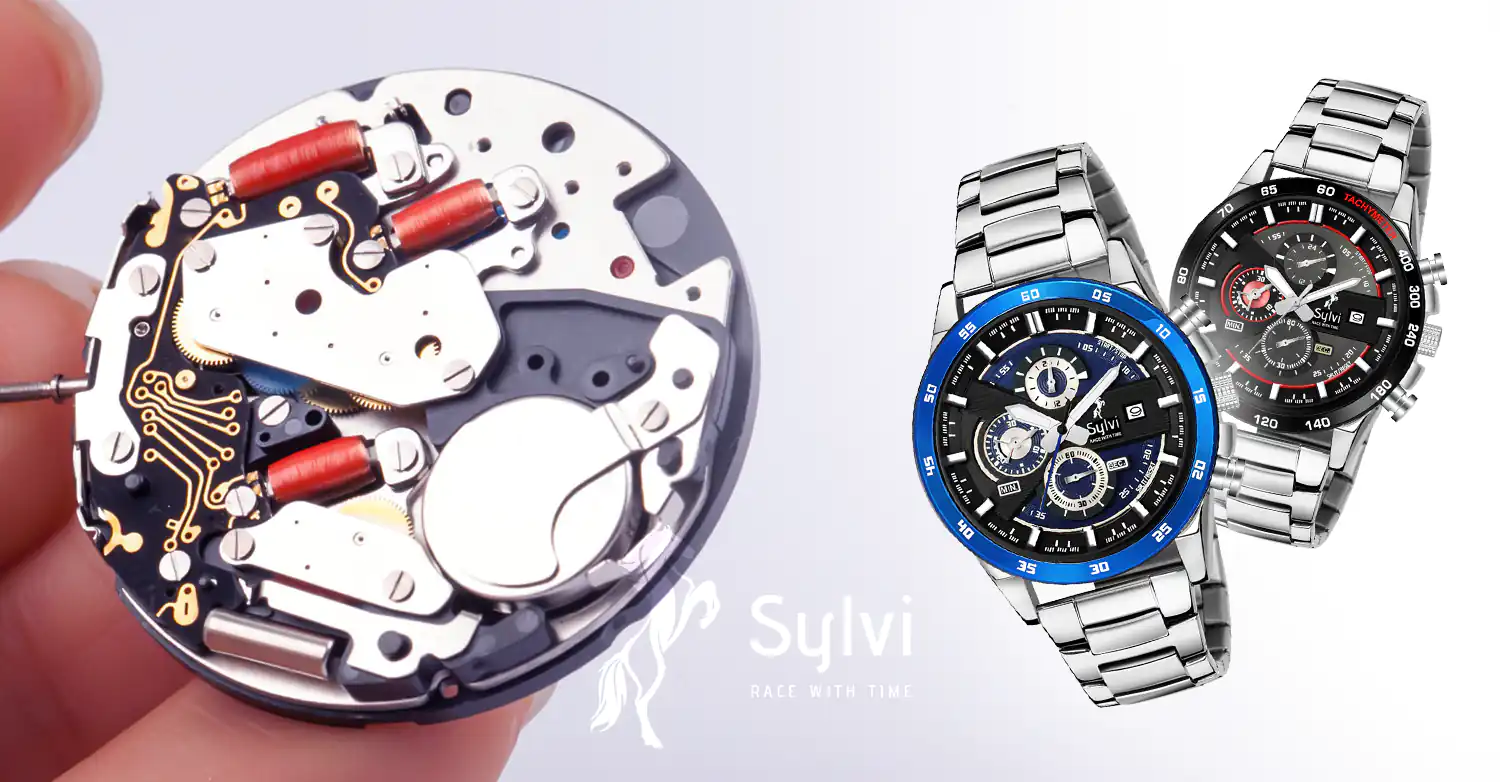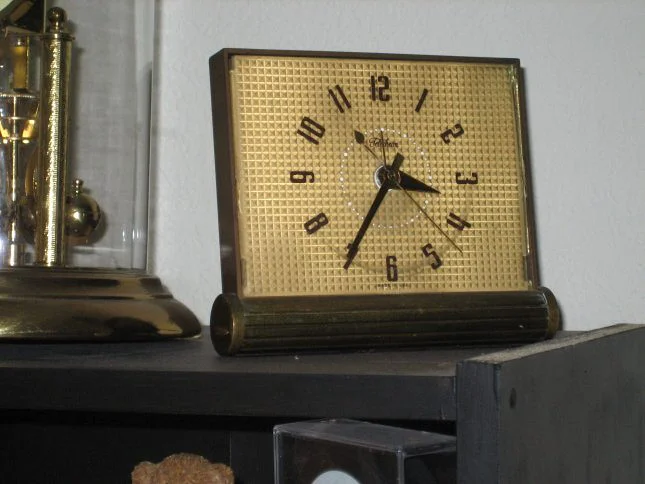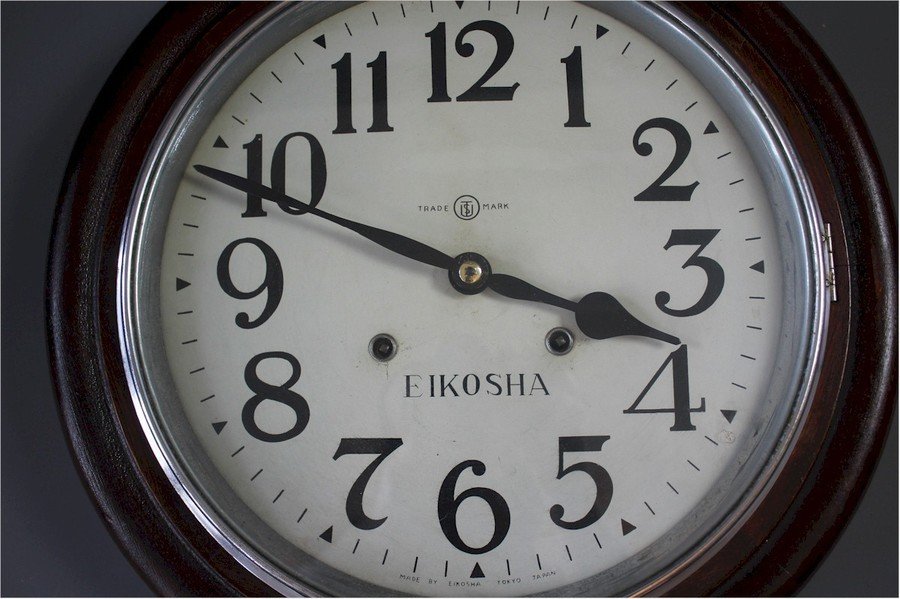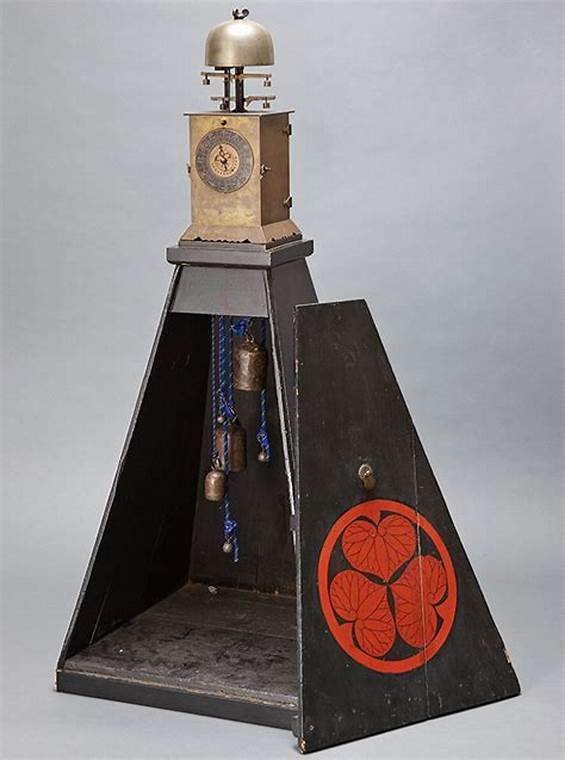Japanese clocks hold a special place in the world of timekeeping due to their unique design and intricate mechanisms. The clock movements, or internal workings, are what drive these fascinating timepieces. This article explores the various types of Japanese clock movements, their evolution over time, and the fine craftsmanship that defines these clocks.
Types of Japanese Clock Movements
Mechanical Movements
Weight-Driven Systems: Early Japanese clocks, especially from the Edo period, often utilized weight-driven mechanical movements. These movements relied on hanging weights that powered the gears and ensured accurate timekeeping.
Spring-Driven Movements: With advancements in clockmaking, spring-driven movements became more common. These mechanisms use a wound spring to provide the necessary energy to keep the clock running. The unwinding of the spring powers the internal gears, making the clock tick.
Verge Escapement Mechanisms: One of the earliest types of mechanical movements in Japanese clocks was the verge escapement. This system controlled the release of energy in small, regular intervals, giving the clock its characteristic ticking sound. It was often found in early clocks that borrowed from Western clockmaking techniques.
Quartz Movements
Rise of Quartz Technology: In the 20th century, quartz movements revolutionized the clock industry, both in Japan and worldwide. These movements use a small quartz crystal that vibrates when electrically charged, creating precise and accurate timekeeping without the need for winding.
Durability and Precision: Quartz movements offer greater durability and precision compared to mechanical movements. They require less maintenance and are highly accurate, which is why many modern Japanese clocks favor this technology. However, quartz clocks lack the artisanal charm and complexity of mechanical timepieces.
The Evolution of Japanese Clock Movements
Early Influences and Adaptation
Borrowing Western Techniques: Japanese clockmakers initially drew inspiration from European clockmaking, particularly in the use of verge escapements and weight-driven systems. The first Japanese clocks, known as wadokei, were heavily influenced by the mechanics of Western clocks introduced by Dutch traders in the 17th century.
Unique Adaptation to Japanese Timekeeping: Japan’s traditional timekeeping system, based on variable-length hours that changed with the seasons, presented a challenge for early Japanese clockmakers. They adapted Western mechanics to create clocks that could accommodate this timekeeping method, resulting in highly specialized clock movements.
The Meiji Era and Industrialization
Standardization of Time: The Meiji era saw a shift toward a standardized 12-hour system, aligning Japan’s timekeeping practices with the rest of the world. This change led to the development of more simplified clock movements, making clocks more accessible to the general public.
Mass Production: As industrialization took hold, clockmaking in Japan transitioned from artisanal workshops to mass production. Companies like Seiko and Citizen emerged as leaders in the clock and watch industry, producing high-quality mechanical and, later, quartz clocks with precision movements.
Modern Innovations
Seiko’s Role in Quartz Clocks: Seiko revolutionized the clock industry with its development of quartz technology in the 1960s. The introduction of quartz clocks and watches brought unprecedented accuracy and affordability, solidifying Japan’s position as a global leader in the clockmaking industry.
Fusion of Tradition and Technology: While quartz movements dominate the modern market, there remains a strong appreciation for traditional mechanical clocks in Japan. Many clockmakers continue to produce mechanical timepieces that blend historical techniques with modern design, preserving the artistry of Japanese clock movements.

Craftsmanship in Japanese Clock Movements
Attention to Detail
Precision Engineering: Japanese clock movements, whether mechanical or quartz, are known for their precision engineering. Each gear, spring, and cog is meticulously crafted to ensure smooth operation and accurate timekeeping.
Handmade Components: In traditional mechanical clocks, many components are handmade by skilled artisans. This attention to detail is what sets Japanese clocks apart from mass-produced counterparts, making each clock a unique piece of craftsmanship.
Balance Between Functionality and Aesthetics
Elegant Design: Japanese clockmakers have long been known for their ability to balance functionality with aesthetic beauty. This is reflected in the careful design of the clock movements, where every part not only serves a practical purpose but also contributes to the overall elegance of the timepiece.
Cultural Influence: Japanese clocks often incorporate cultural motifs, such as natural elements and minimalist designs. The movements are crafted to complement the clock’s overall design, ensuring that the internal mechanism reflects the external artistry.
Maintenance of Japanese Clock Movements
Cleaning and Lubrication
Regular Cleaning: Mechanical clock movements require regular cleaning to remove dust and debris that can accumulate in the gears. Dirt buildup can cause the clock to run inaccurately or stop working altogether. Professional clock repair specialists typically handle the cleaning of intricate antique movements.
Lubrication: Proper lubrication is essential for maintaining smooth movement in mechanical clocks. Specialized clock oils are applied to the gears and pivots to reduce friction and wear. Quartz movements, on the other hand, require minimal maintenance, making them easier to care for.
Replacing Worn Parts
Mechanical Movements: Over time, parts of mechanical movements can wear down and require replacement. This may include springs, gears, or escapements. It’s important to use authentic or period-appropriate parts to maintain the integrity and value of the clock.
Quartz Movements: Quartz clocks, while generally low-maintenance, may require battery replacement or servicing of the electronic components. These repairs are relatively simple compared to the intricate work required for mechanical clocks.
Conclusion
Japanese clock movements are a blend of precision engineering, artistic craftsmanship, and historical evolution. From the early mechanical movements influenced by Western techniques to the modern quartz innovations, Japanese clocks represent a rich tradition of timekeeping. Whether mechanical or quartz, these movements are a testament to Japan’s dedication to both form and function, making Japanese clocks highly prized by collectors and enthusiasts alike.





Handelt es sich um einen Promo Code für einen Einzahlungsbonus, müssen Sie noch vorher eine Einzahlung
durchführen, bevor Sie die Bonusgutschrift oder die Freispiele erhalten. Wollen Sie
also einen ganz bestimmten Automaten spielen,
prüfen Sie zunächst, ob Sie ihn mit dem Promo Code überhaupt nutzen dürfen! Auch
Echtgeld-Boni ohne Einzahlung werden angeboten, allerdings sindCasino Freispiele bei Registrierungsehr beliebt bei den Nutzern. Mit unserer umfassenden Übersicht aller aktuellen Casino Promo Codes Dezember 2025 helfen wir
euch dabei, die Bonuscodes für Online Casinos gezielt zu nutzen. Auch fleißige Stammspieler und registrierte Kunden wollen natürlich bonustechnisch verwöhnt werden. Da ein Glücksspieler sich nicht in einem Online Casino anmeldet, um dort nur einen einzigen Spin zu spielen, entfällt dieses Argument hier.
Alle unsere Bonusangebote sind von unseren Experten ausgiebig getestet.
Wir prüfen dabei die Qualität, Quantität
und Vielfältigkeit der Spiele, die Bonusangebote und ihre Bedingungen sowie den angebotenen Service wie die Zahlungsmethoden und den Kundensupport.
Wir gehen exklusive Partnerschaften mit vielen Online Casinos ein, sodass wir Ihnen die besten und exklusivsten Bonusangebote bieten können.
References:
https://online-spielhallen.de/ihr-umfassender-guide-zu-joo-casino-bonus-codes/
Insgesamt können Sie auf fast 350 Glücksspiele in 9 Kategorien zugreifen und online Spielautomaten, Roulette und Keno
spielen. Als Neukundin habe ich direkt einen attraktiven Willkommensbonus und einige Freispiele erhalten. Das Casino
ist lizenziert und bietet ein Umfeld, in dem Spieler sicher und unbeschwert spielen können.
Kostenlose professionelle Weiterbildungskurse speziell für
Mitarbeiter von Online Casinos, die sich auf die Erfahrungen aus der Branche stützen, und
die auf die Verbesserung der Spielerkenntnisse und auf
einen fairen und verantwortungsvollen Umgang mit dem Glücksspiel abzielen. Teilen Sie
Ihre Meinung mit oder erhalten Sie Antworten auf Ihre Fragen. Weitere Informationen zu allen Beschwerden und Schwachstellen finden Sie in dieser Bewertung
im Teil „Erklärungen zum Sicherheitsindex”. DaVincis Gold Casino hat eine gefälschte Glücksspiellizenz. Wir verwenden auf unseren Seiten Affiliate-Links und erhalten möglicherweise eine Provision für Kunden, die an Online Casinos verwiesen werden.
Das Casino bietet sowohl klassische Spiele als auch moderne Slots, was das Spielerlebnis abwechslungsreich und spannend gestaltet. Das Casino bietet sowohl klassische als auch moderne Spiele, was den unterschiedlichen Vorlieben der Spieler gerecht wird. Spieler finden hier eine sichere Plattform, die durch ihre Benutzerfreundlichkeit und vielfältige Spielauswahl überzeugt.
References:
https://online-spielhallen.de/casino-venlo-freispiele-ihr-weg-zu-kostenlosem-spielvergnugen/
There are several deposit bonuses that you can earn at the casino, depending on the ongoing
promotion at hand (more on this under the “Other promotions” section).
The login process is fast and quite simple at Ozwin Casino online,
enabling you to start playing multi-vendor games in a minute or two.
And don’t forget that there are even more online casino
games to dive into and increase your shot of locking in instant freebies and real cash rewards.
Oz win casino offers a seamless mobile gaming experience. Oz win offers exciting bonuses for new and existing
players.
The welcome bonus helps beginners start with additional funds and free spins on popular RTG pokies such
as Achilles, Asgard Deluxe, and Aztec’s Millions.
The site maintains encrypted connections to protect ozwin login credentials and personal data.
Returning players can log in directly from the homepage.
The site is intuitive, mobile-friendly, and supports local payment methods including Visa, Mastercard,
Neosurf, PayID, and Bitcoin. These settings encourage balance and help users stay in control of their gameplay.
References:
https://blackcoin.co/59_online-casino-vip-programs_rewrite_1/
In 2020, Cloudflare released a JAMstack platform for developers to deploy websites on Cloudflare’s Edge infrastructure, under the name “Pages”.
Cloud services available globally Only Cloudflare offers
an intelligent, global cloud network built from the ground up for security, speed, and
reliability. Build, deploy, and secure access for remote MCP servers so agents can access the features of your apps.
Use our industry-leading WAF, DDoS, and bot protection to protect your
websites, apps, APIs, and AI workloads while accelerating performance with our ultra-fast CDN.
Patrick Gilmore, of Akamai, stated that at the time it was “the largest publicly announced DDoS attack in the history of the Internet”.
In 2023, Cloudflare launched “Workers AI”, a framework
allowing for use of Nvidia GPU’s within Cloudflare’s network.
Cloudflare was founded in 2009 by Matthew Prince,
Lee Holloway and Michelle Zatlyn, and in 2019 the company went
public. Ingest, store, and query data with S3-compatible
object storage. Build and deploy ambitious AI applications to Cloudflare’s global network.
Supercharge your site performance and improve
reliability with traffic intelligence from our global network.
Cloudflare announced the acquisition of Area
1 Security in February 2022, a company who developed a product designed to combat phishing email attacks.
Cloudflare provides free and paid DDoS mitigation services that protect
customers from distributed denial of service (DDoS) attacks.
In March 2025, Cloudflare announced a new feature called “AI Labyrinth”,
which combats unauthorized “AI” data scraping by serving
fake “AI”-generated content to LLM bots. Cloudflare provides
network and security products for consumers and
businesses, utilizing edge computing, reverse proxies for web traffic, data center interconnects, and a content distribution network to serve content across
its network of servers. In November 2025, it was announced Cloudflare had agreed to acquire Replicate, a San Francisco–based platform that
enables software developers to run, fine-tune, and deploy open-source machine-learning models via an API without managing infrastructure.
References:
https://blackcoin.co/40_best-vip-online-casinos-for-high-rollers-in-2022_rewrite_1/
Most popular NFT platforms run on Ethereum, but it’s not the only option. A good NFT marketplace should have
user-friendly tools for buying and selling.
Make sure the marketplace you choose works with your wallet.
If you’re on the Ethereum blockchain, gas fees can be steep, especially during busy times.
Whether you’re into NFT art, gaming collectibles, or digital
art, these key factors will help you decide where
to buy, sell, and trade NFTs. Whether it’s NFT art, gaming assets, or collectibles, there’s a
category for every crypto enthusiast.
The third season takes place in suburban California, as Joe
and Love Quinn-Goldberg raise a newborn baby together. In season one, Joe looks after a young
neighbor (Paco) whose home life is very similar to his own experiences as a child—an absentee mother and a
violent, drunk father figure. Speaking in an interview with Vogue, the showrunner explained that
the second season, offered an opportunity for the writers to
satirize and dig beneath the Hollywood scene, influencer lifestyle and wellness culture that permeates the surface of Los Angeles.
Due to narrative changes, the second season would necessitate a shift in setting
to Los Angeles from the prior season. After the series premiered, Kepnes mentioned in an interview with
Emily Baker from iNews, that she was initially hesitant
on labeling Joe, as a few readers argued that his actions,
classified him as a serial killer. In season two, Love’s brother Forty
deals with recovery, and the show deepens its exploration by focusing on Love’s co-dependent
need to guide Forty through his issues.
After you’re all signed in, you’re ready to create
a session to share with others. As you progress through this article you will see screenshots from
two different computers to demonstrate a working example of how Live Share works.
References:
https://blackcoin.co/betman-casino-a-comprehensive-review-for-australian-gamblers/
Casinos that offer several no deposit bonuses simultaneously are few and far between. Bonus wagering
requirements represent the number of times you must play
through your no deposit bonus. Specific rules and bonus conditions vary
significantly from one site to another, but several groups of T&Cs
are almost universally implemented across most AU online casinos.
You are not required to make deposits to claim cashback bonuses.
Technically speaking, deposits are not required to trigger bonuses from VIP schemes, but you will have to
wager your casino balance to accumulate the points needed to climb the VIP ladder.
“Exclusive” NDBs are bonuses typically requiring specific actions or codes
you can’t find on casino sites.
Stake.us can also be relied upon to offer numerous additional deals for existing customers.
You won’t need to make any deposits to get this deal, but you will need to sign up for
the first time. This is hardly the best welcome bonus
I’ve seen, but McLuck partly compensates with the other promotions it has
available.
References:
https://blackcoin.co/login-to-your-spin-city-account-the-official-site-2025-updated/